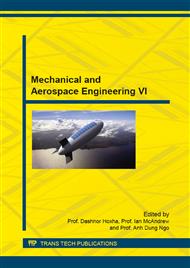p.41
p.48
p.53
p.59
p.64
p.70
p.75
p.85
p.92
Design of Walking Mechanism for All-Terrain Mobile Platform
Abstract:
The new all-terrain mobile platform can improve the human mobility in non-structure environment, which is mainly determined by the walking mechanism quality. In this paper, the walking mechanism structure is designed, and its working principle is analyzed. Theoretical analysis and parameter optimization are completed during the parameter design of the tracked circle, which verifies the parameter rationality of the self-tension mechanism. Besides, the dynamic analysis of the multi-degree of freedom suspension system is accomplished. The results show that the structure and parameter design of the walking mechanism is available, which provides theoretical basis for the new mobile platform parametric design.
Info:
Periodical:
Pages:
64-69
Citation:
Online since:
October 2015
Authors:
Keywords:
Price:
Сopyright:
© 2015 Trans Tech Publications Ltd. All Rights Reserved
Share:
Citation:


